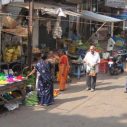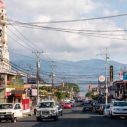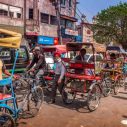
Search
Articles

Rebooting the Global MPI
The year 2018 turned out to be one of the most demanding yet stimulating years for the OPHI team. One key achievement for the team was the collective effort in revising the global Multidimensional Poverty Index or MPI – an internationally comparable measure of acute poverty for developing countries. The motivation for the revision was the progress made in terms of data availability for measuring human development in the last decade. For this, we must acknowledge the outstanding work carried out by global micro-data providers such as the Demographic Health Survey (DHS) team and the Multiple Indicators Cluster Survey (MICS) team.

Is There Poverty in Germany?
Can we talk meaningfully about poverty in an advanced economy like Germany? And if so, what does poverty look like? Or is poverty really something that societies leave behind once they are ‘developed’? Critics argue that the official German poverty measure, which follows a relative income approach, does not reflect real poverty.

Andhra Pradesh Becomes the First Indian State to Adopt a Multidimensional Poverty Index
The Indian state of Andhra Pradesh published the first edition of its multidimensional poverty index (MPI) report this year in March. This pioneering venture made Andhra Pradesh the first state in the country to have undertaken a project exclusively to estimate an MPI at the state and district level, disaggregated by social categories and urban-rural areas, using the data collected through a household survey conducted specifically for this purpose.

The MPI as a Tool for Achieving Poverty Reduction Goals in Costa Rica
In July 2016, just nine months after launching the Costa Rica Multidimensional Poverty Index (MPI-CR), President Luis Guillermo Solís Rivera issued Presidential Directive N°045-MP. In this directive he called on ‘all heads and officials of ministries and institutions of the public social sector to use the Multidimensional Poverty Index as an official tool for measuring poverty, guiding the allocation of resources, and monitoring and evaluating social programmes’.

The Global MPI 2018 Shows that India Has Made Remarkable Progress
In September of this year, OPHI and the United Nations Development Programme published a new version of the global MPI, adjusting five of its ten indicators to better align this index with the Sustainable Development Goals (SDGs). With results covering more than 100 countries – disaggregated into more than 1,000 subnational regions, rural-urban areas, and age groups – the global MPI 2018 is particularly useful for identifying people who are being left behind in the SDGs.












